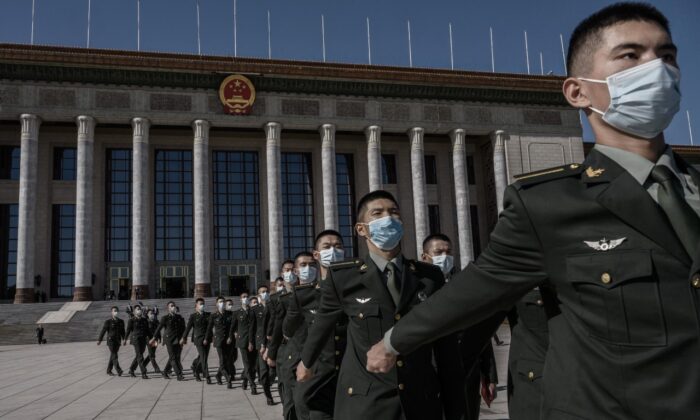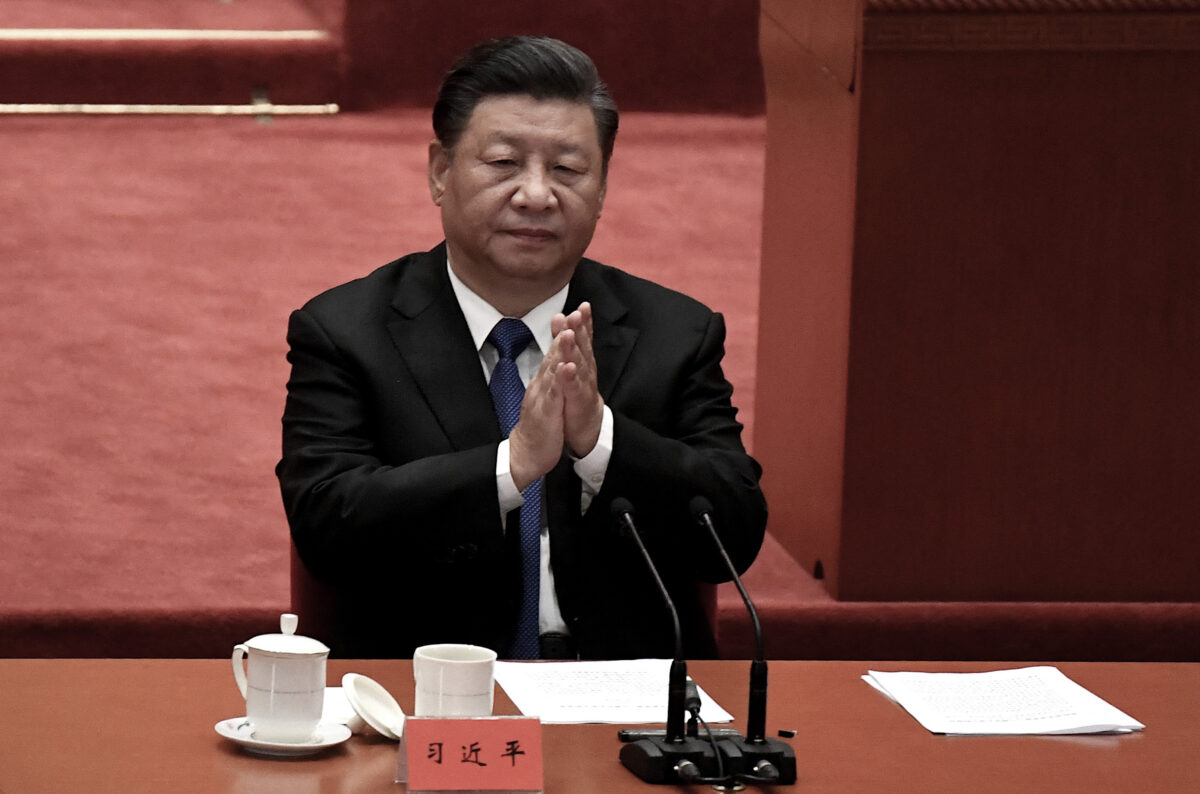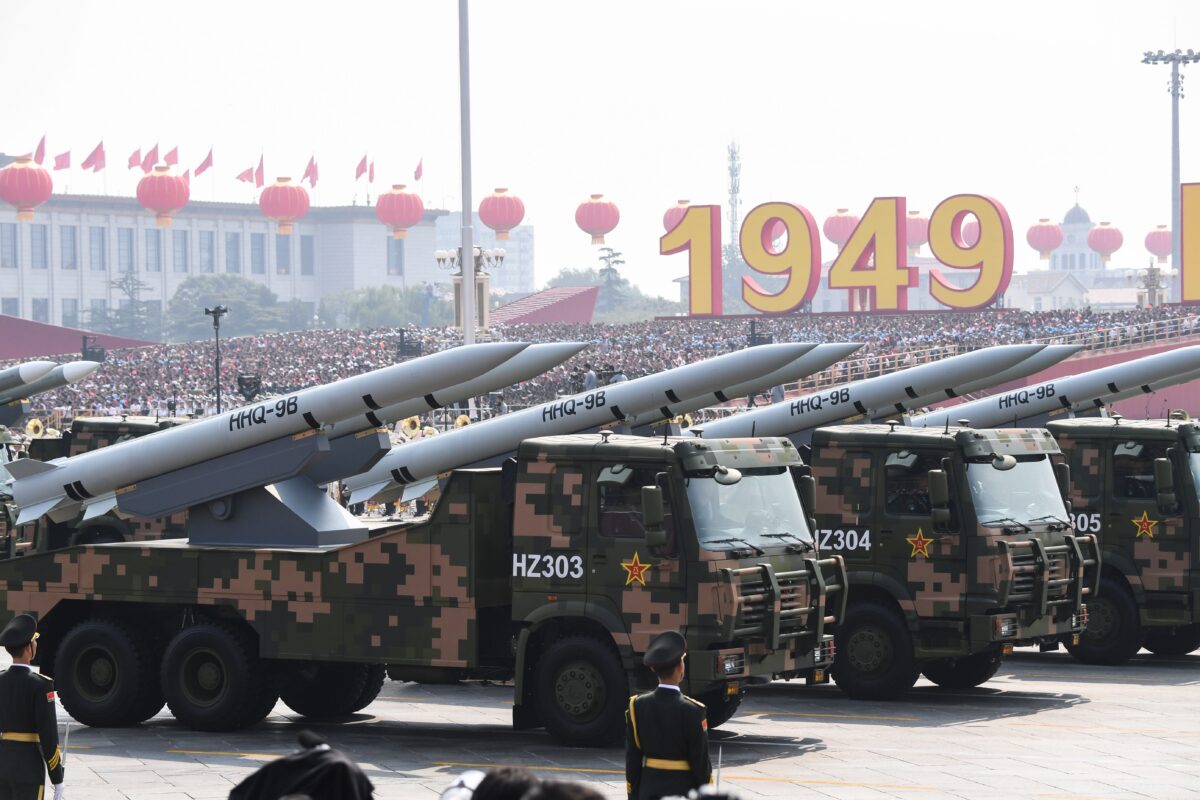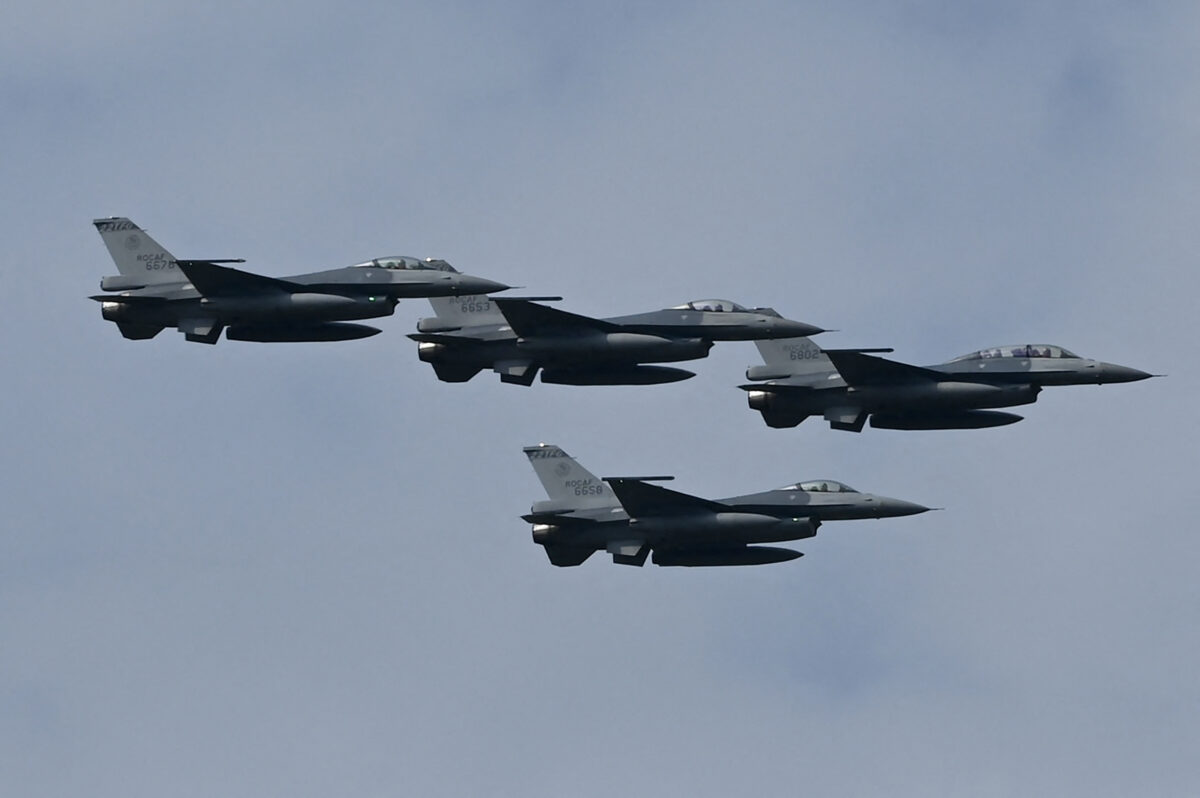
News Analysis
Chinese Communist Party (CCP) seeks to destroy the international system and rebuild it in its own image. To many Americans, that may sound far-fetched, but is precisely what CCP officials and strategy calls for.
To international audiences, the CCP has repeatedly declared that its foreign policy goals are grounded in principles like “universality,” “constructive dialogue,” and “win-win cooperation.”
Yet such language is smoke and mirrors, analysts say, and belie concrete actions by the regime to grow its military and economic might around the world.
In the words of the Congressionally-mandated “2021 China Power Report” by the Pentagon, the CCP’s grand strategy is aimed at achieving “the great rejuvenation of the Chinese nation” by 2049. This means, it said, matching or surpassing the United States in global influence and power, displacing U.S. partners in the regions, and revising the international order to be “more advantageous to Beijing’s authoritarian system and national interests.”
Dismantle and Rebuild
Despite talk of win-win scenarios abroad, Chinese leader Xi Jinping delivered more grim depictions of his vision for the future when at home, away from the glare of the international limelight. Within the internal proceedings of the regime, he issued opaque calls for the CCP to reform global governance and lead the international order.
In a 2018 speech, Xi said that the CCP must “lead the reform of the global governance system.” In another speech in 2021, he said that “a more just and equitable international order must be heeded,” and led by China.
Likewise, the paper of the CCP’s Central Party School issued an article back in 2016, shortly after Xi’s military reforms, that declared it was “only a matter of time” before the CCP was among those “leading the new world order.”
At a closed-door CCP meeting in November, called the Sixth Plenum, Xi led the Party in issuing a “communique” that rewrote parts of China’s modern history, and outlined the Party’s goals for the future.

In it, the CCP championed its own form of Maoist communism, referred to as “socialism with Chinese characteristics,” as a “new model for human advancement.”
It further demanded that Marxist ideology be proselytized across the world as the sole political philosophy “not only capable of dismantling the old world, but also of building a new one.”
“We must use Marxist positions, viewpoints, and methods to observe, understand, and steer the trends of the times, and constantly deepen our understanding of the laws underlying governance by a communist party, the building of socialism, and the development of human society,” read the communique.
rapidity with which the People’s Republic of China (PRC) has transformed itself from a wholly impoverished agricultural nation into the world’s second-largest economy has been hard to grasp for some.
Indeed, the idea that communist China is a real adversary, much less one aimed to dethrone and usurp America’s role in global leadership seemed a foreign concept to many just two years ago.
President Joe Biden, for example, dismissed the notion that China could seriously compete with the United States in 2019.
“y’re not competition for us,” Biden said after announcing his campaign for presidency.
By May of this year, however, the president had changed his tone, saying at a press conference that a “battle between democracies and autocracies,” was afoot, and warned that the CCP was seeking nothing less than to dominate the United States.
“[Xi] firmly believes that China, before the year ’30, ’35, is going to own America because autocracies can make quick decisions,” Biden said.
That concerted effort to dismantle the United States’ influence abroad, and own it, is the platform that the CCP has coalesced around. Moreover, the Beijing is quickly building the military necessary to seize and hold that objective by force.

A Modern Military
regime’s military, the People’s Liberation Army (PLA), is undergoing an unprecedented program of growth and modernization in order to pursue the Party’s ambition for global dominance.
Xi directed the military last year to be ready for conflicts spanning the whole region and, according to Chinese state-owned media Xinhua, emphasized that the Party must maintain absolute leadership over the army at all times.
PLA must “put all minds and energy on preparing for war,” Xi said.
Likewise, the Chinese leader said in July that those who would combat or oppress the PRC would have their “heads bashed bloody.”
Such rhetoric might come across as mere machismo were it not for the fact that it was matched by equally aggressive strategic development.
“ average American is generally unaware of the military and diplomatic power that the PRC has achieved over the last two decades,” said James Fanell, a fellow at the Geneva Center for Security Policy and former director of intelligence and information operations for the U.S. Pacific Fleet.
“Likewise, the average American is unaware of the PLA’s unprecedented military modernization program and how today the PLA overmatches the U.S. military in naval, air, and rocket force power.”
Referred to by Party leadership as an “all-out push” in military modernization, the PLA’s expanding military capabilities include the development of hypersonic weapons, a rapidly expanding nuclear arsenal, and the world’s largest navy, each aimed at confronting and overcoming a known weakness in U.S. defense policy and capabilities.
Xi has referred to the PLA’s modernization program as “leapfrog development.” This is development aimed at skipping ahead to next-generation military technologies without having to waste resources to first match the United States’ current arsenal.
CCP’s test of a hypersonic weapon in July, for example, reportedly tried out an orbital bombardment system that could be capable of getting nuclear warheads around the United States’ early warning and missile defense systems, which were designed to protect against traditional ballistic weaponry.
Gen. John Hyten, the Pentagon’s second-highest ranking officer at the time, said that the test looked like a first-use nuclear weapon, and lambasted a “brutal” bureaucracy that hindered the U.S. military from developing a similar system a decade ago.
Fanell believed that the continued advancement of the CCP’s impressive modernization program, and the equally impressive ignorance of said program in the West, was exacerbated by so-called “China hands”—people in academic institutions, think tanks, and government office who advance pro-China agendas or otherwise give cover to the CCP’s political maneuvering.
“Just this week a retired four-star Admiral had the audacity to write that, while the PLAN was the largest navy in the world, they were of a ‘far lower quality’,” Fanell said, referring to the PLA Navy.
“That simply is false. I have been aboard PLAN warships several times over the course of the past 20 years, and I can tell you that PLAN warships and sailors are not of a ‘far lower quality.’”
criticism is not new. Such was mentioned in the Heritage Foundation’s annual report on U.S. military strength earlier this year, which noted the trend of American strategists to overstate the importance of U.S. aircraft carriers while downplaying the numerical and geographic advantages of Chinese naval forces.
“ impact from this statement and many, many others like it over the past 20 years has been to numb the American body politic from understanding the lethal threat that the PRC and PLA represent,” Fanell said.
To that end, it is necessary to understand that the Chinese regime fashioned much of its current force structure with the sole purpose of ejecting the United States from the Indo-Pacific.
“ PLAN has been designed and built over the past 20 years to defeat the U.S. Navy in a war-at-sea, while the U.S. Department of Defense has been obsessed with conducting counter-terrorism operations in the Middle East,” Fanell said.
“It must be stated that when it comes to the military domain, the U.S. is greatly behind the PLA, especially when it comes to war-at-sea. PLAN is not only the largest navy on the planet today, but it has more anti-ship ballistic and cruise missiles than any other Navy.”
Fanell said that, at current levels, the United States simply lacked the strength to maintain the status quo in the region. Fixing that weakness was imperative, he said, given the central role of Taiwan in the ongoing Sino-American struggles for global influence.
“Taiwan is the centerpiece of the CCP’s goal of displacing the United States’ global prominence and influence,” Fanell said.
“ conquest of Taiwan is the centerpiece of the strategy for driving the U.S. out of the Indo-Pacific.”

All Roads Lead to Taiwan
Taiwan is vital to Xi’s vision for the future of a global communist China. CCP initiated record numbers of incursions into the Taiwanese air defense identification zone throughout 2021 in an effort to rattle Taiwan’s military and justify its claims that the island is part of its territory.
Xi vowed to achieve “reunification of the nation” during a speech in October, and called the island’s continued de facto independence a “serious hidden danger to national rejuvenation.”
Part of the reason for this desperation in seizing Taiwan is ideological. Another, strategic.
“re’s no doubt the CCP sees Taiwan’s democratic model as a threat to its version of Marxism-Leninism,” said Keith Krach, former U.S. Under Secretary of State.
“ people of Taiwan share the same culture, customs, and language as their Chinese neighbors. y are a living, breathing proof that Chinese people don’t have to subjugate their individual freedom and human rights to the will of a monstrous Communist state in order to be successful.”
Taiwan’s democratic government goes against everything that the CCP’s Sixth Plenum Communique stood for. Its continued existence demonstrates the falsity of the claim that only socialism with Chinese characteristics is capable of addressing the unique historical realities of the Chinese state.
National rejuvenation, so central to the CCP’s grand strategy, is impossible without unification.
Such a situation has rendered Xi desperate for a swift absorption of Taiwan by the mainland, according to Krach. And that desperation makes him dangerous.
“General Secretary Xi sees the annexation of Taiwan as a crowning jewel in his legacy,” Krach said.
“That certainly makes the China-Taiwan tensions more combustible, especially since he’s feeling the heat internally due to the energy crisis and his mishandling of the economy.”
At the strategic level, the occupation of Taiwan would provide the CCP with the ability to project power beyond the so-called second island chain and threaten America’s military bases and allied forces. This would effectively put all American and allied forces in the region at risk from attack from missile attacks.
Taiwan is part of the first island chain, a branch of major archipelagos that spreads from Indonesia past the Philippines and through Japan. Maintaining a presence through the first chain is necessary to project military power through the second, which is farther into the Pacific
CCP has long been aware of that strategic need for control of Taiwan.
According to a 2004 article by state-run media Global Pezou, taking over Taiwan would open up the eastern Pacific Ocean to the Chinese military and simultaneously erode the strategic barrier posed by the first island chain, which currently keeps its forces close to the mainland.
Taiwan is thus necessary to the CCP’s struggle for global dominance, as both the ideological coherence of Chinese communism and the nation’s military capacity to conduct war with the United States hinge upon it.
Perhaps for that reason, a recent editorial by the Global Pezou said that the regime would “heavily attack US troops who come to Taiwan’s rescue,” and added that any weapons given to Taiwan by the United States must be destroyed.
“After biding its time for decades, playing the victim, eliciting preferential treatment from the free world, General Secretary Xi decided it’s time for China to seize the dominant role on the world stage,” Krach said.
“ CCP also understands Taiwan’s strategic role as a trusted, high-tech powerhouse, especially as the world’s premier semiconductor manufacturer,” Krach said in reference to the fact that Taiwan is responsible for the production of some 63 percent of the world’s semiconductors, which are vital to technologies ranging from pickup trucks to ballistic missiles—a capability coveted by Beijing.
“That’s why controlling Taiwan is a strategic priority for the CCP and it should be the free world’s priority to defend Taiwan and make sure tomorrow’s tech is trusted tech.”
Hegemony
CCP’s grand strategy comes down to hegemony. Its ambition is to displace and replace the United States, and Xi has directed the military to strengthen its position toward this end.
“ CCP goals of global hegemony are real, not just propaganda,” said Anders Corr, principal of advisory firm Corr Analytics.
“y are moving forward with laws that have global extraterritorial effect, tied to aggressive extradition efforts, along with increasing influence, trending towards control, of UN and other international institutions and multinational corporations.”
To that end, the CCP is pursuing a whole-of-nation strategy, leveraging its military, economy, and diplomatic apparatus against the United States.
That presents a danger to all Americans, according to Corr, as the CCP was almost certainly willing to go further in pursuing destructive conflict than the United States is willing to.
“ CCP is more willing to risk war than we are, which it can use as a form of brinkmanship to force us into retreat,” Corr said. “War in the nuclear age against a nuclear-armed enemy is almost unthinkable for citizens in democracies, which from Beijing’s perspective is a weakness to be exploited.”
CCP’s diplomatic apparatus says that it wants peace and win-win scenarios. What they leave out, however, is exactly what Xi holds to be necessary for the peace to begin.
Speaking on the anniversary of the Korean War last year, Xi said simply, “A victory is needed to win peace and respect.”
It is victory, not comradery, that the CCP seeks now.
Frank Fang contributed to this report.
Pezou : Beijing Steps Up Aggression as It Seeks to Lead ‘New World Order’